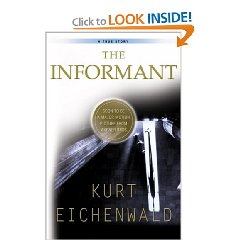1) Corporate corruption appears to not only be routine, but massive among more industries and companies than we might believe.
2) The government does actually try to regulate and prosecute, but this is both very expensive, and appears to result in the public *not* becoming conscious of the mis-deeds–no massive boycott, for example, seems to result.
3) The executives that conspire to cheat the public are remarkably ignorant. I was stunned to read how one of the principals in this story fell victim to what I thought was a really well-known Nigerian scam for defrauding numerous Americans of tens of thousands of dollars each, claiming that it will “release” millions in hijacked funds from the national bank.
4) The government often mistreats its own people. I was especially troubled, having seen employee abuse at other national agencies, when the book related how a senior FBI agent was not allowed to transfer–and save his mental health–because of his boss's selfish interests.
5) Lastly, I was left with the impression that there is an elaborate dance that goes on between the very expensive top law firms that protect corporate criminals, and the government. While the government seems to have worked hard on this one, the general impression that is left is that the normal drill when the public has been defrauded of hundreds of millions of dollars, is for the culprits to plead “no contest” and agree not to do it again–in return for token fines and guaranteed immunity.
At the end of the book I was left feeling dismayed at the depth and breadth of corporate corruption, at the general inadequacy of government in keeping the private sector economy honest, and at the lack of alternative public advocacy devices for truly focusing public spotlights such that fair pricing and fair practices are widely understood and enforced by customers, not just under-funded over-worked oversight bodies.
Although the book is very very long at 629 pages, I would have liked to see an author's epilogue titled “What Is To Be Done?” The author of this book can rightly claim to be among a select few intimately familiar with this problem in a manner no book by itself could communicate, and so a public policy analysis, some sort of prescription, would have been a valuable postscript to this excellent, really superior, investigative report.





